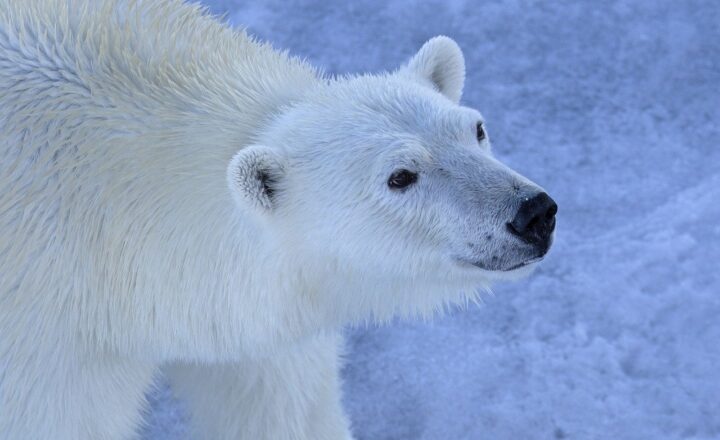Exploring the World’s Most Breathtaking Glaciers Before They Disappear
November 13, 2024

Glaciers are among the most magnificent natural wonders on Earth, harboring an incredible amount of beauty and science beneath their icy surfaces. However, these stunning formations are also disappearing at an alarming rate due to climate change, melting away faster than we can truly comprehend. It’s crucial that we explore and appreciate these breathtaking glaciers before they fade into history.
1. Understanding Glaciers: Nature’s Frozen Giants
Glaciers are massive, persistent bodies of dense ice that form over years through the accumulation and compaction of snow. Found mainly in polar regions and high mountain ranges, they act as natural reservoirs of fresh water, contributing to ecosystems and human water supplies globally. There are two main types of glaciers:
- Continental Glaciers: These are vast ice sheets that cover large areas, like Antarctica and Greenland. They can be thousands of meters thick and are significant players in global sea-level changes.
- Alpine Glaciers: Found in mountainous regions, alpine glaciers flow down valleys and are typically smaller than their continental counterparts. They are often popular hiking and climbing destinations, both for their beauty and their educational value.
The majestic beauty of glaciers attracts tourists, scientists, and nature lovers alike. However, the unfortunate reality is that many glaciers, from the famous Himalayas to the breathtaking fjords of Norway, are receding at alarming rates due to global warming. This calls for immediate action on raising awareness and exploring these icy landscapes before they change irrevocably.
2. The Disappearing Glaciers: What’s Happening?
Climate change is primarily responsible for the rapid melting of glaciers worldwide. Rising global temperatures disrupt the delicate balance that maintains their existence. Here are some critical points to consider about the current state of glaciers:
- Melting Rates: According to scientific studies, various glaciers worldwide are losing mass at rates between 0.5 meters to over 2 meters per year, leading to significant changes in the geography and ecosystems that depend on these ice masses.
- Impact on Ecosystems: Glaciers play a vital role in the hydrological cycle. As they melt, they contribute to rising sea levels and alter surrounding ecosystems, threatening wildlife and human communities dependent on stable water sources.
- Cultural Significance: Many communities, especially indigenous groups, hold glaciers in spiritual regard. Their loss could mean the disappearance of cultural history and traditions connected to these majestic ice formations.
With alarming reports surfacing regularly about the decline of glaciers, it’s essential that we take the opportunity to understand them while we can and advocate for sustainable practices to preserve our planet.
3. Top Glaciers to Explore Before They Disappear
To appreciate the beauty of glaciers, travelers must explore some of the most breathtaking sites globally that showcase their grandeur. Here’s a list of must-visit glaciers:
a. Perito Moreno Glacier, Argentina
Located in Patagonia, the Perito Moreno Glacier is one of the few glaciers globally that is still expanding. Spanning over 250 square kilometers, it is famous for its calving events, where large chunks of ice break off and crash into the water.
b. Vatnajökull Glacier, Iceland
Iceland’s largest glacier, Vatnajökull, covers roughly 8% of the country’s land area. This stunning glacier features ice caves, waterfalls, and unique ice formations that draw visitors from around the globe.
c. Aletsch Glacier, Switzerland
The Aletsch Glacier is the largest glacier in the Alps and is a UNESCO World Heritage site. Visitors can hike around picturesque viewpoints showcasing breathtaking panoramic views of the glacier and its surrounding mountains.
d. Sólheimajökull Glacier, Iceland
Just off the Ring Road, Sólheimajökull is a popular destination for glacier hiking and ice climbing. Its easily accessible location, along with mesmerizing blue ice formations, makes it a favorite among adventurers.
e. Franz Josef Glacier, New Zealand
Located on New Zealand’s West Coast, the Franz Josef Glacier allows visitors to experience glacial landscapes up close. Unlike many other glaciers, this one is connected to temperate rainforest ecosystems.
Each of these glaciers offers unique experiences, stunning sights, and a chance to witness the powerful forces of nature. However, they need to be visited soon as their futures remain uncertain due to climate change.
4. Tips for Responsible Glacier Exploration
When planning your visit to these stunning glaciers, consider the following tips for a responsible and sustainable exploration:
- Stay on Marked Paths: Protect the fragile environment by adhering to designated pathways and guidelines provided by park services. Avoid stepping onto the ice unless accompanied by a certified guide.
- Respect Wildlife: Glacial regions often harbor unique wildlife. Maintain a safe distance and never feed or disturb the animals you might encounter on your journey.
- Leave No Trace: Follow the principles of Leave No Trace, ensuring you take all your rubbish with you, including biodegradable items, to protect these pristine environments.
- Support Eco-tourism: When planning your trip, choose companies that advocate environmentally friendly practices. Supporting local communities and sustainable tourism helps preserve these natural resources.
By following these guidelines, you can ensure your exploration of glaciers is respectful and eco-friendly, highlighting the significance of these natural wonders.
5. Conclusion: A Call to Action
The urgency to explore and protect glaciers has never been greater. These breathtaking ice giants are not just beautiful landscapes but are vital components of our planet’s health and biodiversity. As they recede, they remind us of the pressing issue of climate change and our responsibility to cultivate a sustainable and harmonious relationship with nature.
Before these colossal wonders vanish, it is essential for everyone to advocate for awareness, preservation, and appreciation of glaciers. Exploring these magnificent sights can inspire action against climate change and motivate future generations to protect our natural world, ensuring that these frozen giants remain a part of our global heritage.
Let us come together to explore, educate, and safeguard the world’s glaciers before they ultimately disappear from our view and memory.








